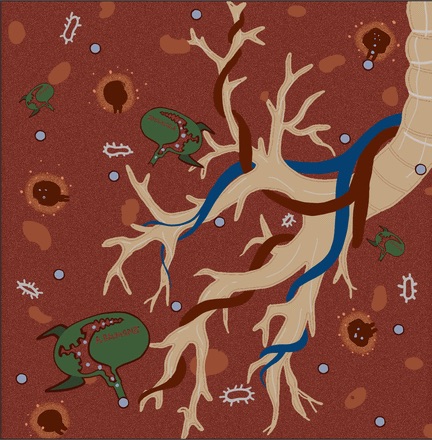by Leigh MacMillan

Acinetobacter baumannii — a cause of pneumonia, sepsis, wound and burn infections — is becoming more prevalent and resistant to antibiotics. Like other pathogens, A. baumannii must acquire metals including zinc from the host, which hides metals in a process called “nutritional immunity.”
Eric Skaar, PhD, and colleagues have now identified and functionally characterized a zinc uptake (Znu) system that A. baumannii uses to acquire zinc and overcome nutritional immunity.
They report that the Znu system consists of proteins located in the bacterium’s outer and inner membranes, and that strains of A. baumannii lacking any Znu component are unable to grow in the presence of the host zinc-sequestering protein, calprotectin. They also show that the Znu system is important for pathogenesis in multiple mouse models of A. baumannii infection.
The research, featured on the cover of the December issue of Infection and Immunity, reveals a mechanism for A. baumannii zinc uptake, which could potentially be targeted by novel antimicrobial therapeutics.
The cover image was created by Ayomide Sanusia, an undergraduate student at Vanderbilt University participating in the ArtLab Artist-in Residence program, which places students in laboratories to generate art relevant to the ongoing research.
The research was supported by the National Institutes of Health (grants AI101171, GM065086, AI136255) and the American Heart Association.















